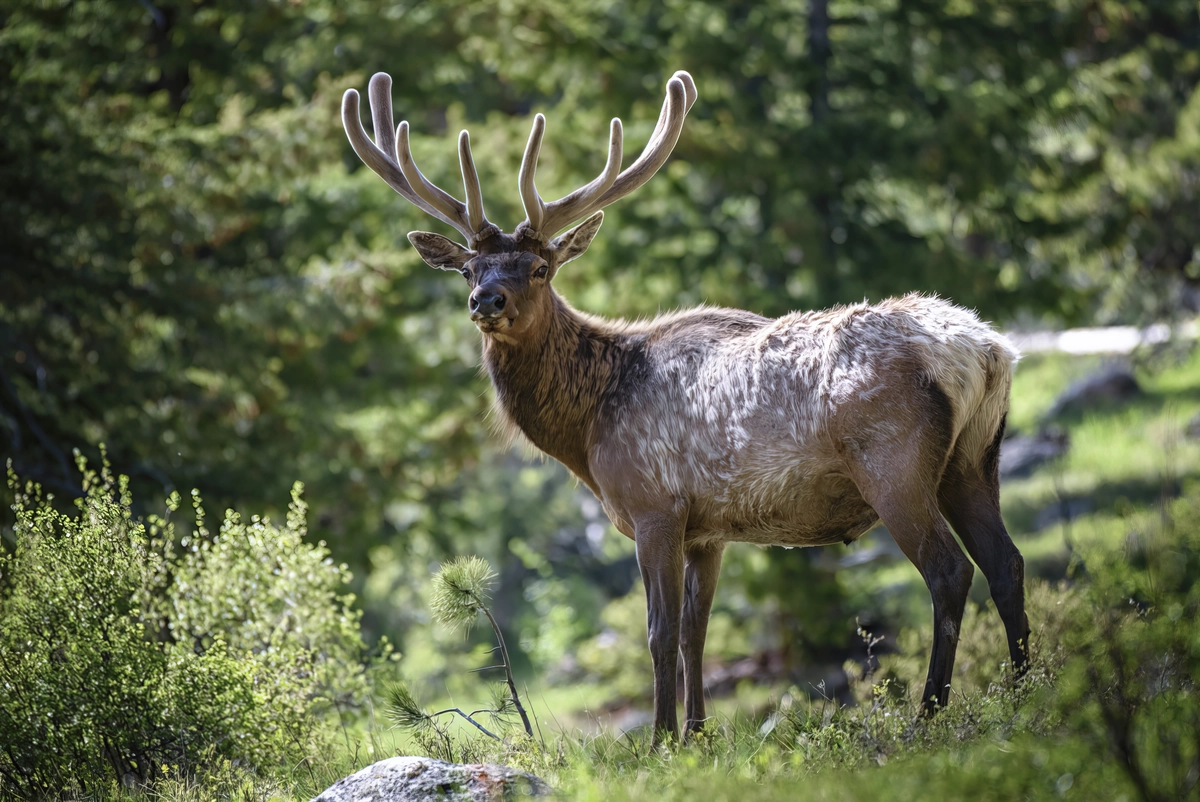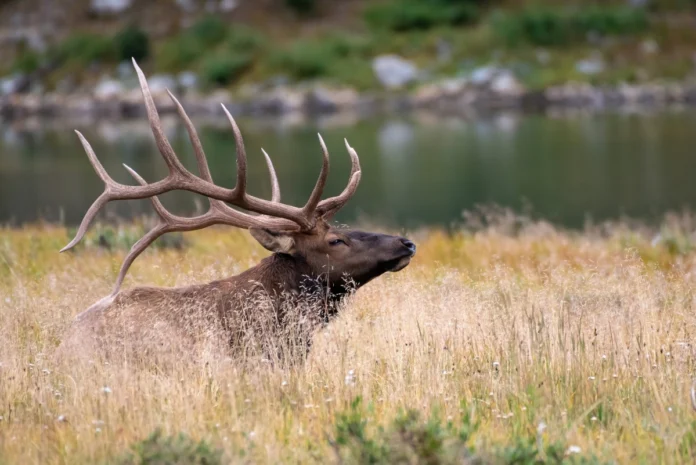If you live or work around the Front Range, you know the sound first: a bugle sliding from fluted whistle to throaty roar. That’s Cervus canadensis nelsoni—the Rocky Mountain elk—moving between high-country summer range and lower wintering grounds, riding the green wave of new forage as snow retreats. They’re big, social, and highly adaptable. They’re also not pets. Treat them like wildlife or they’ll remind you the hard way.
Eating Habits: A Seasonal Engine
Elk are ruminants with four-chambered stomachs built to churn through a lot of plant matter. In summer they graze and browse the alpine buffet: tender grasses and forbs dominate; as fall cools and plants toughen, grasses carry more of the load. In winter, when the good stuff’s buried or dead, elk shift to what they can reach—grasses poking through windswept ground, plus shrubs, twigs, and even bark. Mineral licks supplement what the range lacks.
That seasonal rotation isn’t random. It’s a precision fuel plan that maintains body condition for the rut, gestation, and winter survival. Because they’re built to move, elk make daily and seasonal trade-offs: calories versus cover, bite quality versus travel time, and later in the year, conserving energy versus finding unfrozen water.
What Makes Rocky Mountain Elk Different
North America has several elk subspecies. Rocky Mountain elk stand apart with their antlers—the largest of all elk subspecies. While Roosevelt elk of the Pacific Northwest outweigh them in body mass, the sweeping antlers of a Rocky Mountain bull are unmatched. The coastal Tule elk of California, by contrast, are much smaller in body size and live in very different habitats.
In short: Roosevelt elk are heavier, Tule elk are smaller, but Rocky Mountain elk wear the crown for antler size. Their frames are tuned for migration, covering wide seasonal ranges across rugged interior landscapes.

Climate Change: The Ground Is Moving Under Them
Elk don’t read climate reports; they read snowlines and green-up. That’s exactly why a warming, drying West matters. Earlier snowmelt and shifting plant growth patterns are altering when and how herds migrate. This feeds directly into body condition, pregnancy rates, and calf survival.
Prolonged heat and drought reduce forage quality and moisture, and that hits lactating cows hardest. Less fat going into winter means fewer, smaller calves making it out the other side. Hydrology drives much of this—declining snowpack and altered melt timing shorten the peak forage season, dry out late summers, and force elk to crowd shrinking water sources. Managers now focus on maintaining corridors and reducing human pressure so herds can still “surf” the green wave of spring green-up, even as the calendar no longer matches the land.
Behavior & Danger: In RMNP, Distance Isn’t Optional
Let’s be blunt. An RMNP bull in September is not Bambi with a crown. He’s amped on hormones, defending cows and a pecking order. A cow in May or June is worse—hyper-protective with a calf on shaky legs. The National Park Service rule is clear: keep back at least 75 feet (25 yards) from elk.
Do people get hurt? Yes—every year. In 2024, three separate elk attacks took place in about a week around Estes Park, including a cow elk stomping an 8-year-old who had come too close to a hidden calf. Incidents spike in spring and fall, when cows and bulls are at their most defensive. The lesson isn’t panic—it’s distance and awareness.
During the rut, double your distance. Use a long lens, not bravado. If an elk starts advancing, get a car, a tree, or a big rock between you and those hooves. Antlers are dangerous; hooves are worse.

Population and Management Context
Rocky Mountain National Park’s elk population has swung from too few to too many and now to carefully managed balance. Reduced migration and concentrated wintering hammered willow and aspen stands in the park. Management plans today mix fertility research, limited culls, and habitat restoration to keep elk numbers in check and vegetation communities from collapsing.
Complicating matters is chronic wasting disease, an always-lurking threat in many herds. Management isn’t a one-time fix—it’s constant adaptation as weather, forage, and visitor pressure change.
Where You’ll Meet Them
In summer, look for them in high-country meadows and subalpine parks. In winter, they move to lower valleys and even town edges, where wind clears snow from the grass. Estes Park golfers can tell you—elk view a fairway as just another meadow with flagpoles.

Photographers and Hikers
- Never cut the distance for a “clean portrait” of a rutting bull.
- Watch the body language: pinned ears, head lowered, pawing the ground, lateral display, short rushes—all mean “leave now.”
- In spring, assume every cow has a calf you can’t see.
- Group leaders: set the minimum distance and enforce it.
The minimum distance isn’t a suggestion; it’s the law. In calving and rut seasons, play it even safer.
Rocky Mountain elk are built on movement and timing—digestive hardware tuned to shifting forage, migrations wired to snow and green-up, social rules hammered out by hooves and antlers. Climate change is scrambling parts of that script: less reliable snowpack, tighter late-summer water and forage, and migrations that have to flex more than they used to.
They’re coping for now because elk are adaptable. But adaptability isn’t a magical shield—it just buys time if we keep corridors open and keep our distance.
And for humans: yes, people are injured every year. It’s nearly always because they got too close. Respect the 75-foot rule, read the animal in front of you, and remember: a 600-pound ungulate doesn’t care about your selfie. Do it right, and you’ll get the shot—and you’ll get home.
References and research
- National Park Service – Elk in Rocky Mountain National Park
- Colorado Parks & Wildlife – Living with Elk
- Rocky Mountain Elk Foundation – Elk Facts
- NPS Elk and Vegetation Management Plan
- Denver Post – Estes Park Elk Attacks 2024
- OutThere Colorado – Elk Attacks in Colorado
- Nature Ecology & Evolution – Climate impacts on ungulate migration
- PubMed – Snowmelt timing and forage availability for elk
- National Wildlife Federation – Big Game Migration Corridors





